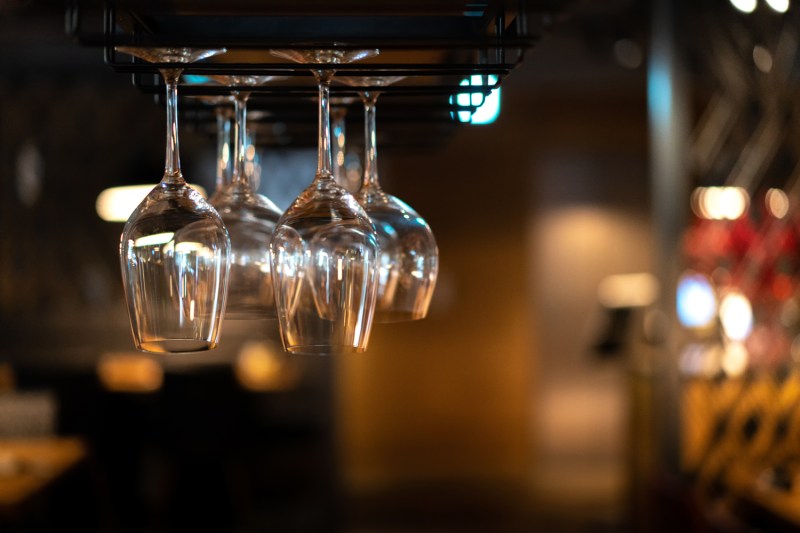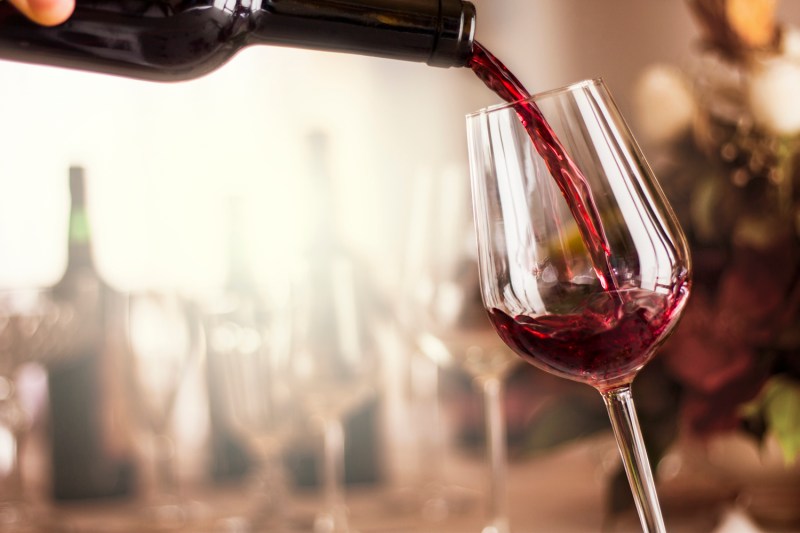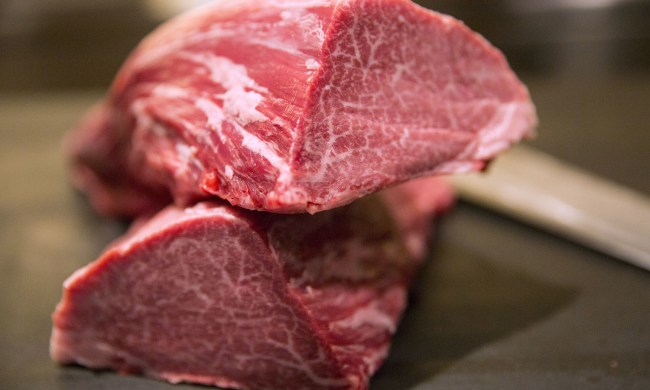
There is a lot of debate about the correct way to hold a wine glass. Learning the recommended ways to hold a wine glass helps maximize your wine experience no matter where you are or what you are drinking. The correct way to hold a wine glass has more to do with changing the chemistry of the wine itself, and that’s something that can be good or bad, depending on what you are drinking.
We are going to take a look at a couple of different wine glass styles and the best way to hold them for maximum comfort and effectiveness. We touch on sparkling wine and dessert wines only briefly because the main focus here is actually wine glasses.
Related Guides
- Most Popular Wines
- Best Wine Subscription Box Services
- A Quick Guide to Wine Bottle Sizes, Shapes, and Names
Anatomy of the Wine Glass
A typical wine glass has four parts:
- Rim-the rim is the top part of the glass where you drink from.
- Bowl-the bowl holds the wine.
- Stem-the stem connects the base to the bowl and offers support.
- Base-The base is the part that supports the whole glass, keeping it stable on any surface.
What is the Proper Way to Hold a Wine Glass?

The two different styles of wine glasses are stemmed and stemless. There are pros and cons for each of these styles but they do have their particular uses no matter what you choose. When it comes to wine glasses, there are different shapes and sizes for sparkling, white, rosé, red, and dessert wines.
We’ve put together this guide to properly hold your wine glass.
How to Hold a Stemmed Wine Glass

The stem is the most critical part when it comes to holding the glass. It connects the bowl to the base and allows you to hold the glass in order to avoid warming your wine. When you hold the glass at the bowl, the temperature of your hands can warm the wine, impacting its taste and quality. This is particularly important for white, rosé, and sparkling wines because they need to be chilled in order to release their delicate aromas.
As a general rule, all stemmed wine glasses are held by the stem with the base as support. You should hold the glass towards the base with the stem between your thumb and the first two fingers. The other three fingers should provide support and strength, particularly when holding the glass for extended periods. This is the most basic way of holding a wine glass.
You can also pinch the glass at the stem using your thumb and index finger. The index finger wraps around the stem and then the thumb’s tip provides support. Some people will also feel comfortable grabbing the glass from the base using the index finger and the thumb.
Why Hold By the Stem

There are two main reasons you should hold wine glasses by the stem:
- Avoiding smudges and fingerprints and
- Keeping wine temperature cooler longer
Holding your wine by the bowl works if the wine is over chilled. You can cup the bowl to bring the temperature up. If the wine is chilled too much, it may be better to use a stemless wine glass. If a wine is too cold, it will mute the flavors. Additionally, wine temperatures can be too warm, making the flavor seem flat.
You can of course hold the wine glass any way that is comfortable to you. It should not deter you from enjoying your wine experience. We suggest experimenting with the various methods of holding the stem, you may find one that suits you best.
How Do You Hold a Stemless Wine Glass?

Just because you don’t have a stemmed glass doesn’t mean you shouldn’t enjoy your favorite wine. Stemless wine glasses, also known as tumblers, can be great for wine drinking, too.
So, how do you hold them? You simply need to hold them the way you would hold the typical drinking glasses. The best way to hold the wine is still closer to the base, which in this case is the flat bottom. You’ll just need to minimize contact to prevent warming your wine. Tumblers are perfect for when your wine is too cold. You can cup it and bring the wine up a few degrees to release its bouquet.
One final tip is to always try to drink from the same side of the glass no matter what glassware you are using. This is another way to minimize smudges and fingerprints from appearing on your glass.
FAQ
Why do Wine Glasses Have Stems?

Wine tastes better when it’s served at the right temperature. The stem allows you to hold the glass to avoid placing your hand on the bowl. Ideally, holding the glass by the bowl interferes with the wine’s temperature. Plus, stems give your wine a better appearance while on the table — longer stems look better.
Why are Thin Wine Glasses Better?

This is a noticeable aspect in most wine glasses. According to wine experts, wine glasses are thinner to provide a vivid view of the colors of the wines. This allows you to admire your wine more. Also, wine glasses tend to be thinner near the rim. This allows you to drink your wine in small sips, just as it is intended. Taking small sips also allows you to drink your wine without any spills.
Why Do You Never Fill a Wine Glass?

The rule of thumb is white wines are filled ½ full, red wines are filled ⅓ full, and sparkling wines are filled ¾ full. The reason for these measurements is because red wines need room to breathe and aerate, white or sparkling wines don’t need breathing room.
If the glass is full, it will be difficult to swirl any wine without spilling it. You also run the risk of missing the wine’s unique notes and flavors.



